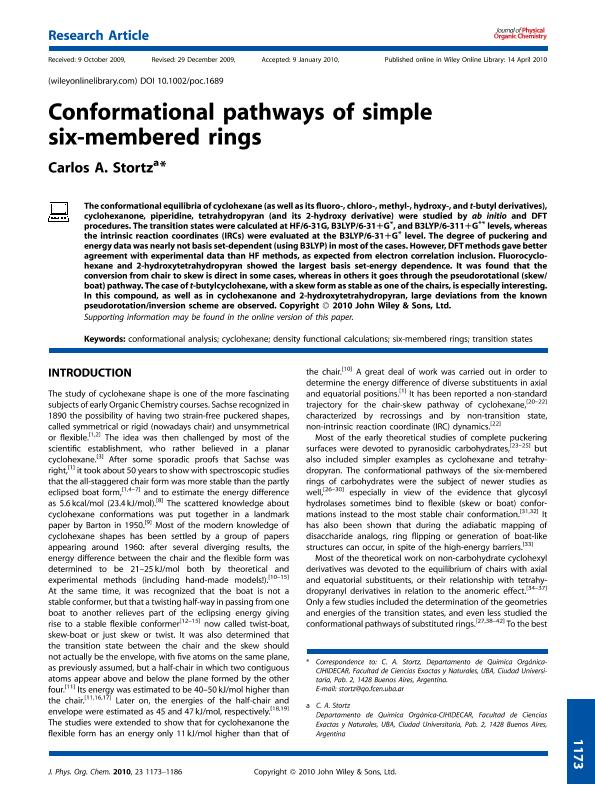Artículo
Conformational pathways of simple six-membered rings
Fecha de publicación:
12/2010
Editorial:
John Wiley & Sons Ltd
Revista:
Journal Of Physical Organic Chemistry
ISSN:
0894-3230
Idioma:
Inglés
Tipo de recurso:
Artículo publicado
Clasificación temática:
Resumen
The conformational equilibria of cyclohexane (as well as its fluoro-, chloro-, methyl-, hydroxy-, and t-butyl derivatives), cyclohexanone, piperidine, tetrahydropyran (and its 2-hydroxy derivative) were studied by ab initio and DFT procedures. The transition states were calculated at HF/6-31G, B3LYP/6-31+G*, and B3LYP/6-311+G* levels, whereas the intrinsic reaction coordinates (IRCs) were evaluated at the B3LYP/6-31+G* level. The degree of puckering and energy data was nearly not basis set-dependent (using B3LYP) in most of the cases. However, DFT methods gave better agreement with experimental data than HF methods, as expected from electron correlation inclusion. Fluorocyclohexane and 2-hydroxytetrahydropyran showed the largest basis set-energy dependence. It was found that the conversion from chair to skew is direct in some cases, whereas in others it goes through the pseudorotational (skew/boat) pathway. The case of t-butylcyclohexane, with a skew form as stable as one of the chairs, is especially interesting. In this compound, as well as in cyclohexanone and 2-hydroxytetrahydropyran, large deviations from the known pseudorotation/inversion scheme are observed.
Archivos asociados
Licencia
Identificadores
Colecciones
Articulos(CIHIDECAR)
Articulos de CENTRO DE INVESTIGACIONES EN HIDRATOS DE CARBONO
Articulos de CENTRO DE INVESTIGACIONES EN HIDRATOS DE CARBONO
Citación
Stortz, Carlos Arturo; Conformational pathways of simple six-membered rings; John Wiley & Sons Ltd; Journal Of Physical Organic Chemistry; 23; 12; 12-2010; 1173-1186
Compartir
Altmétricas




